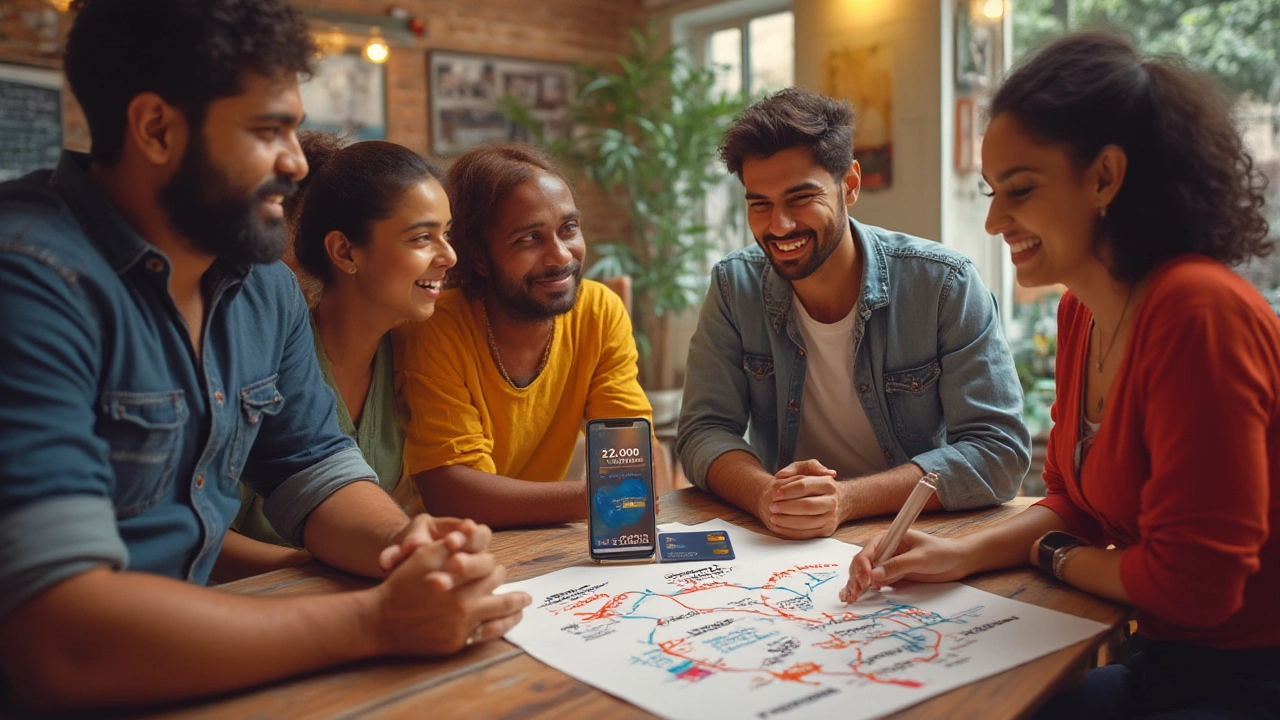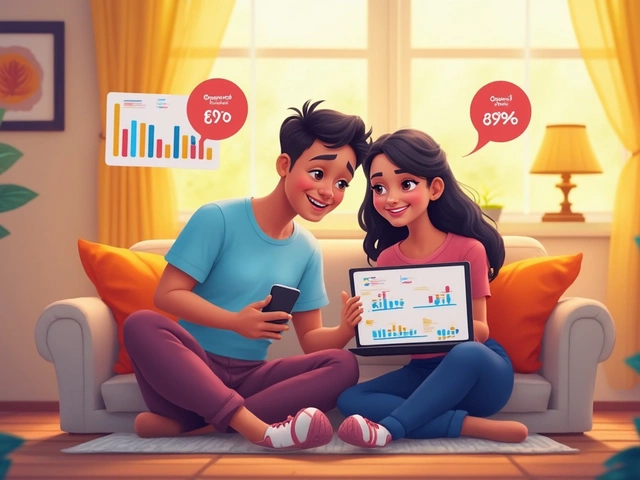
Ever feel like having bad credit shuts every financial door in your face, especially when you need a decent limit? Not long ago, my friend Ravi needed a credit card big enough to cover a vet bill for his dog—$1,700 all at once. His credit score was a mess, but what he found surprised us both: snagging a $2,000 limit can actually happen, even with lousy credit. Let’s get into what’s real, what’s a gimmick, and how you can score a $2,000 limit even if your score looks rough.
Can You Really Get a $2000 Limit With Bad Credit?
Here’s something most banks won’t tell you: very few credit cards advertise a guaranteed $2,000 starting limit for people with bad credit (think scores under 600). Most come with starter limits hovering at $200–$600, and you work your way up. But exceptions do exist, and the choices have grown in 2025. Secured cards are your best shot—these let you "back" your own limit with a deposit. If you put down $2,000 as collateral, you’re nearly always approved for a $2,000 limit. The OpenSky® Secured Visa® Credit Card is one of the only cards that will let you set your own credit limit up to $3,000, regardless of your credit score. No credit check at all. I know someone who actually used his tax refund for the deposit and, almost overnight, had access to a $2,000 credit line.
But what about unsecured cards, where you don’t need a deposit? Here’s where things get tricky. Most unsecured cards for bad credit (like the Credit One Bank Platinum Visa or Reflex Mastercard) don’t start you above $500, at least until you prove yourself with a few on-time payments. There are stories floating around about people getting $2,000 on the Reflex Mastercard straight out of the gate, but most reports peg starting limits around $300–$750. If you see an ad promising instant $2,000 limits with no deposit and no questions asked, watch out—it usually means sky-high fees or even a scam.
Here’s a weird twist: stores like Fingerhut and Horizon Gold offer "credit cards" with big limits up front to almost anyone, but you can generally only use them at their own websites. Not as flexible as a Visa or Mastercard, but if you just need to build history or buy household basics, it’s not pointless. Several legit personal finance YouTubers have tested this.
Want something open-loop (usable anywhere)? In 2025, fintechs like Chime and Varo now have secured cards that look and act more like real ones—add funds up to $2,000, and you get exactly that as your limit. A lot of folks like these because you get spending notifications right away, which helps avoid overdrafting or going overlimit by accident.
The Best Cards for a $2,000 Limit with Bad Credit
So which specific cards actually work, and what are their real pros and cons? Here’s a quick breakdown:
- OpenSky® Secured Visa® Credit Card: No credit check. Set your own credit limit from $200 up to $3,000. Annual fee of $35. Payments are reported to all three bureaus. No fancy rewards, but nearly anyone 18+ can get it.
- Chime Credit Builder Secured Visa®: No hard pull, but you do need a Chime checking account. Put up to $2,000 as your security deposit. No annual or hidden fees. No interest because you can only spend what you deposit.
- Discover it® Secured: Also lets you deposit up to $2,500. Starts reporting right away, offers 1-2% cash back on purchases (unheard of for most bad credit cards). No annual fee. You’ve got to start with $200 minimum, but you can add more later.
- Reflex Mastercard or Surge Mastercard: Advertises limits "up to $2,000" but most people start with $300–$1,000. Some get bumped to $2,000 after first six months of on-time payments. Watch out for high fees: monthly maintenance charges and pricey APRs.
- Indigo® Unsecured Mastercard®: Approval odds are higher, but starting limits are typically lower—often just $300–$500. Still, after a year and good payment history, I’ve seen people double their limit.
Here’s something a lot of people miss: even if a card only starts you at $300, payment history and automatic reviews may get you over the $2,000 line within 12–18 months. But you’ve gotta read the terms. And don’t gloss over maintenance fees. A “$2,000 limit” doesn’t feel so great if $120 of it goes to annual and monthly fees before you ever make a purchase. That’s the difference between the OpenSky (reasonable, straightforward fees) and some of the more aggressive subprime cards.
Watch out for cards that promise guaranteed $2,000 limits with NO deposits—they often come with serious strings attached. If you’re asked for a processing fee before the card even gets mailed, that’s a red flag. In 2025, the FTC has cracked down on a bunch of “fee harvester” schemes, but new ones pop up all the time.
One more tip: Check if your local credit union has a credit builder program with secured cards. Some even give higher limits at lower deposit ratios than the big banks, especially if you direct-deposit your paycheck. If you’re military or have a family member who is, Navy Federal Credit Union's secured card has some of the best upgrade paths for the limit to increase as you build your score.

Steps to Boost Your Limit (and Improve Your Odds)
This is where most people slip up—they get a card, but never see the limit budge. Even with bad credit, you can set yourself up for a $2,000+ limit. Here’s how to make it work:
- Go secured first if you need a high limit ASAP. After six months of on-time payments, ask for a "graduation" to unsecured status. Many banks (like Discover) automatically review your card for a limit increase if you’re solid with payments and avoid maxing out every month.
- Use your card every month, but keep the balance under 30% of your available credit (so for a $2,000 limit, never owe more than $600 at a time). This "credit utilization" factor makes up 30% of your FICO score. Staying below 10% is even better if you can swing it.
- Set up automatic payments—late payments are the enemy. Even one 30-day late mark can set your limit increase—or your whole card—back months.
- Apps like Mint and Credit Karma can give you real-time updates if your issuer does a limit increase or APR change. I set one up to keep an eye on Rusty’s emergency vet bills so I wouldn’t get caught without enough available credit.
- Every 6–12 months, ask nicely for a CLI (credit limit increase). Many cards for bad credit let you apply right from your mobile app. Just keep your income updated with the card issuer’s website—that’s what triggers the computer to consider a higher limit.
- If you’re trying an unsecured card, be strategic about how many applications you send out. Too many hard pulls in 90 days will tank your score further, making big limits harder to reach. One card at a time, and give each at least six months to show results.
- Consider piggybacking on a family member’s card. Authorized users get access to the limit but aren't responsible for the bill—if your trusted friend or parent has a $5,000 card with good history, it can help your report regardless of your starting score.
Don’t ignore the weird psychological side, too—spending less than your limit is the fastest way to get flagged for an increase. I've seen people max their card every month and get stuck at a $500 limit for years, while others who used only a small portion saw a bump after three months.
Watch out for marketing tricks: “credit line increase” offers that charge you a fee for the privilege. Any card that charges you to raise your own limit on top of your deposit is lining its own pockets. Ask the issuer if there are any free ways to increase your limit before you accept those offers.
How to Choose Safely (And Avoid Credit Card Traps)
So many posts and forums throw out a long list of bad credit cards, but half of them are loaded with hidden fees. In 2025, a lot of cards pushed their annual fees even higher—especially those marketed as "guaranteed approval" or "all credit welcome." The safest formula: secured cards for short-term, quick access to $2,000; unsecured cards once your score is closer to 650 and above.
Here are a few warning signs to skip right over:
- Cards with a "processing fee" before you get the card—big red warning flag.
- Annual fees above $99 for a basic card with no perks. You can do better, even with spotty credit history.
- Maintenance fees (every month) that start at $8–$12. These eat into your available limit instantly.
- Interest rates over 30%. If you don’t pay off the balance right away, debt piles up fast.
- Obscure "membership" cards that sound like credit, but only work at one online store.
Don’t skip reading what happens if you miss a payment—some cards for bad credit hike their APR to 34% or more. And avoid cards that don't report to all three major credit bureaus; building your score is the whole point!
Here’s a tip: Check real user reviews before you apply. Subreddits like r/CreditCards and r/CRedit can give you the latest data points. Actual users will call out bait-and-switch offers or cards that never grant the full $2,000 limit, no matter how good your application. Also, keep an eye out for new fintech cards: some smaller startups (like TomoCredit) experiment every year with different limits and criteria.
If you get denied at first, don’t panic. Wait 60 days, clean up any overdue bills, and try again. Sometimes, credit bureaus have errors dragging down your approval odds. A quick dispute can bump your score up by 20–30 points instantly—enough to get approved for a higher-limit card. And if you need a card right this second, those secured Visa/Mastercards with higher deposit options are still your safest bet for a clean $2,000 limit, no questions asked.
So, getting a credit card $2000 limit with bad credit? Not as impossible as banks would have you believe—a little strategic thinking helps you dodge the scams and land the right plastic. Whether you’re covering emergencies (like a rowdy Rusty breaking another dog bed), looking to rebuild, or just want the financial breathing room, the right card is out there if you know where to look—and what to avoid.





Write a comment